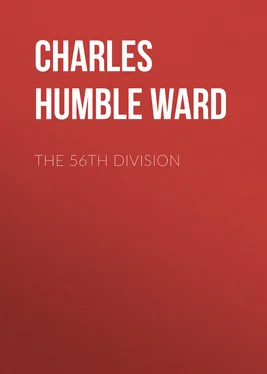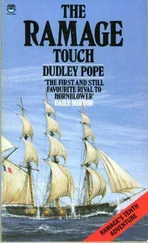Charles Humble Dudley Ward - The 56th Division
Здесь есть возможность читать онлайн «Charles Humble Dudley Ward - The 56th Division» — ознакомительный отрывок электронной книги совершенно бесплатно, а после прочтения отрывка купить полную версию. В некоторых случаях можно слушать аудио, скачать через торрент в формате fb2 и присутствует краткое содержание. Жанр: foreign_prose, История, foreign_edu, foreign_antique, на английском языке. Описание произведения, (предисловие) а так же отзывы посетителей доступны на портале библиотеки ЛибКат.
- Название:The 56th Division
- Автор:
- Жанр:
- Год:неизвестен
- ISBN:нет данных
- Рейтинг книги:5 / 5. Голосов: 1
-
Избранное:Добавить в избранное
- Отзывы:
-
Ваша оценка:
- 100
- 1
- 2
- 3
- 4
- 5
The 56th Division: краткое содержание, описание и аннотация
Предлагаем к чтению аннотацию, описание, краткое содержание или предисловие (зависит от того, что написал сам автор книги «The 56th Division»). Если вы не нашли необходимую информацию о книге — напишите в комментариях, мы постараемся отыскать её.
The 56th Division — читать онлайн ознакомительный отрывок
Ниже представлен текст книги, разбитый по страницам. Система сохранения места последней прочитанной страницы, позволяет с удобством читать онлайн бесплатно книгу «The 56th Division», без необходимости каждый раз заново искать на чём Вы остановились. Поставьте закладку, и сможете в любой момент перейти на страницу, на которой закончили чтение.
Интервал:
Закладка:
The battle on the 9th has always seemed like a wild rush in fast-fading light. It was to open at 4.45 p.m., but on the left of the Corps it seems to have been delayed. Nowhere was it entirely successful in the assault. The situation remained obscure and fighting continued for several days.
The truth of the whole matter was that the enemy defended Combles with desperation. The right of the 56th Division had as hard a task as was ever set for any troops, and on their left was a German strong point bearing the ominous name of “the Quadrilateral,” the strength of which was only learned at bitter cost. We will follow the fortunes of the division from the right of the line.
The 169th Brigade was on the right with the London Rifle Brigade and the Queen Victoria’s Rifles attacking. Leuze Wood, as we know, was always a dangerous spot, and the task of the London Rifle Brigade was to capture those trenches on the south-east of the wood and start the building up of the flank facing Combles. But the moment the men left their jumping-off trenches, their attack was met and destroyed by a hail of rifle and machine-gun fire.
On the left of the London Rifle Brigade the Queen Victoria’s Rifles, whose objective was the enemy trench on the far side of the Combles road, met with more success and gained a precarious footing in a part of that line. But no troops of the 169th Brigade could be said to be established anywhere on their objective.
Part of the 2nd London Regt. was given to the London Rifle Brigade, and a second attack was launched on the trenches south-east of the wood, almost simultaneously with a counter-attack by the enemy from his Bouleaux Wood defences. The Queen Victoria’s Rifles held on to their gains, but the second attack on the trenches south-east of the wood failed. The Queen’s Westminster Rifles, who were in reserve, were sent for.
The 168th Brigade, on the left of the division, attacked with the 4th London Regt. on the right and the Rangers on the left. The 4th Londons, pivoting on the north end of Leuze Wood, gained their first objective under close cover of our barrage and with little loss. But the Rangers came under heavy machine-gun fire from their left. It was ascertained from a prisoner, captured later, that a whole battalion of his regiment, the 161st of the 185th Division, was in the centre of the square marked 20.
The left company of the Rangers, with the troops of the 16th Division on their left, met a strong force of the enemy and were driven back to their point of departure. The right company, however, after hard fighting which lasted until 6 p.m., reached their first objective, the line of the road from Leuze Wood to Ginchy.
Meanwhile the 4th London Regt., sticking close to the artillery barrage, had again advanced at 5.25 p.m. and gained their final objective. But their losses were severe. The machine-gun fire was tremendous, and its effects can be gathered from the fact that a post, which was left to construct a strong point in the first objective, was entirely wiped out.
The right company of the Rangers, having gained their first objective, again advanced, though the opposition they had met with had caused them to be late on the barrage. Again the murderous fire was poured on them from the left, and they swerved so that they came up on the centre of the 4th London troops. These two battalions were now on the line of the trench leading to point 141·7, but exactly how near that point was only determined later. On the right they were in touch with the Queen Victoria’s Rifles.
By this time it was quite dark; and the left of the 56th Division was so much in the air that the enemy was on all but one side of it. The 16th Division had fared badly.
The right brigade of the 16th Division had not been able to advance at all, and were scattered about in front of Guillemont. The left brigade had secured a footing in Ginchy, and the 3rd Brigade of the Guards Division was already on its way to relieve the whole of the 16th Division. But the situation was far from good.
The Kensingtons, who were in support to the 168th Brigade, had moved forward to occupy the departure trenches, and the commanding officer, seeing something of what had happened, promptly tried to strengthen the flank of the 4th London Regt. and the Rangers. He disposed of his battalion in forward positions with the object of protecting the left flank. The London Scottish were sent for.
Before 11 p.m. the two reserve battalions, the London Scottish and the Queen’s Westminster Rifles, had arrived in the vicinity of Leuze Wood. But the situation which faced General Hull at midnight was not a comfortable one. His left was surrounded by Germans, and probably only protected by the night, and his right was uncertain; there had been reports of enemy snipers in Leuze Wood, and the enemy was certainly pressing strongly with his bombers.
Both brigades were ordered to attack again.
Following events from the right of the line, the Queen’s Westminsters were ordered to attack and capture the trenches south-east of the wood before dawn. The night was pitch dark, and the Germans were pouring shells into the wood. The exact bearing of the trench and its distance from the wood were unknown to the battalion. It was impossible to arrange an earlier hour than 7 a.m. for the attack.
Patrols were sent out to get in touch with the enemy and reconnoitre the ground, and while the battalion waited casualties mounted up. At last came the dawn, but it brought no light; a thick mist had settled over the country. At 7 a.m. the attack started.
Two companies attacked. The right company went straight ahead, and the left was told to swing to their left and take a trench beyond the sunken road leading to Combles. The barrage was described as ineffective, which was, maybe, due to the fog. At any rate, neither company reached its objective. The enemy was lining his defences in force and poured in a hot fire with rifles and machine guns.
Later in the day a further attack was launched, but met with no success, and the situation during the whole of the morning, complicated by the thick mist, remained extremely uncertain.
On the 168th Brigade front the London Scottish had not waited till dawn for their attack. They formed up in six waves, in trenches dug by the 5th Cheshires on the extreme left of the original line of departure, and were ordered to thrust through, moving due north, and fill the gap between the 4th London Regt. and the troops of the 16th Division in Ginchy. It was hoped that all the enemy troops in square 20 would be cut off.
A quarter of an hour after midnight, in pitch darkness, the battalion started to advance. The first three waves progressed some 600 yards, and then, failing to see any landmarks or recognise where they were, they halted and sent out patrols. The last three waves were nowhere in sight; they had lost direction and joined the 4th London Regt. and Rangers on their right. But while the leading waves waited for their patrols to get in touch with either friend or foe, they were attacked by about a hundred Germans from their rear. The London Scottish whipped round and scattered them at the point of the bayonet. The enemy vanished, but left a considerable number of dead on the ground.
The London Scottish were now completely lost, and so marched south to pick up their position again.
The attempted attack, however, was not repeated, but two and a half companies were sent to the trench occupied by the 4th London Regt. and the Rangers (Bully), where they attempted, by bombing, to reach point 141·7. Their efforts were not successful.
Meanwhile the situation to the left of the 56th Division was no less obscure. The 3rd Brigade of the Guards Division had been hurried up in the dark to relieve the 16th Division. The guides of the left brigade of the latter division led a relieving battalion into Ginchy, but had only the haziest idea where their own troops were. Part of the 16th Division on the east of the village was not relieved until midday on the 10th. Ginchy was repeatedly attacked by the enemy, and no one knew with any certainty what was happening.
Читать дальшеИнтервал:
Закладка:
Похожие книги на «The 56th Division»
Представляем Вашему вниманию похожие книги на «The 56th Division» списком для выбора. Мы отобрали схожую по названию и смыслу литературу в надежде предоставить читателям больше вариантов отыскать новые, интересные, ещё непрочитанные произведения.
Обсуждение, отзывы о книге «The 56th Division» и просто собственные мнения читателей. Оставьте ваши комментарии, напишите, что Вы думаете о произведении, его смысле или главных героях. Укажите что конкретно понравилось, а что нет, и почему Вы так считаете.




![Александр Ирвин - Tom Clancy’s The Division 2. Фальшивый рассвет [litres]](/books/417744/aleksandr-irvin-tom-clancy-s-the-division-2-falsh-thumb.webp)







